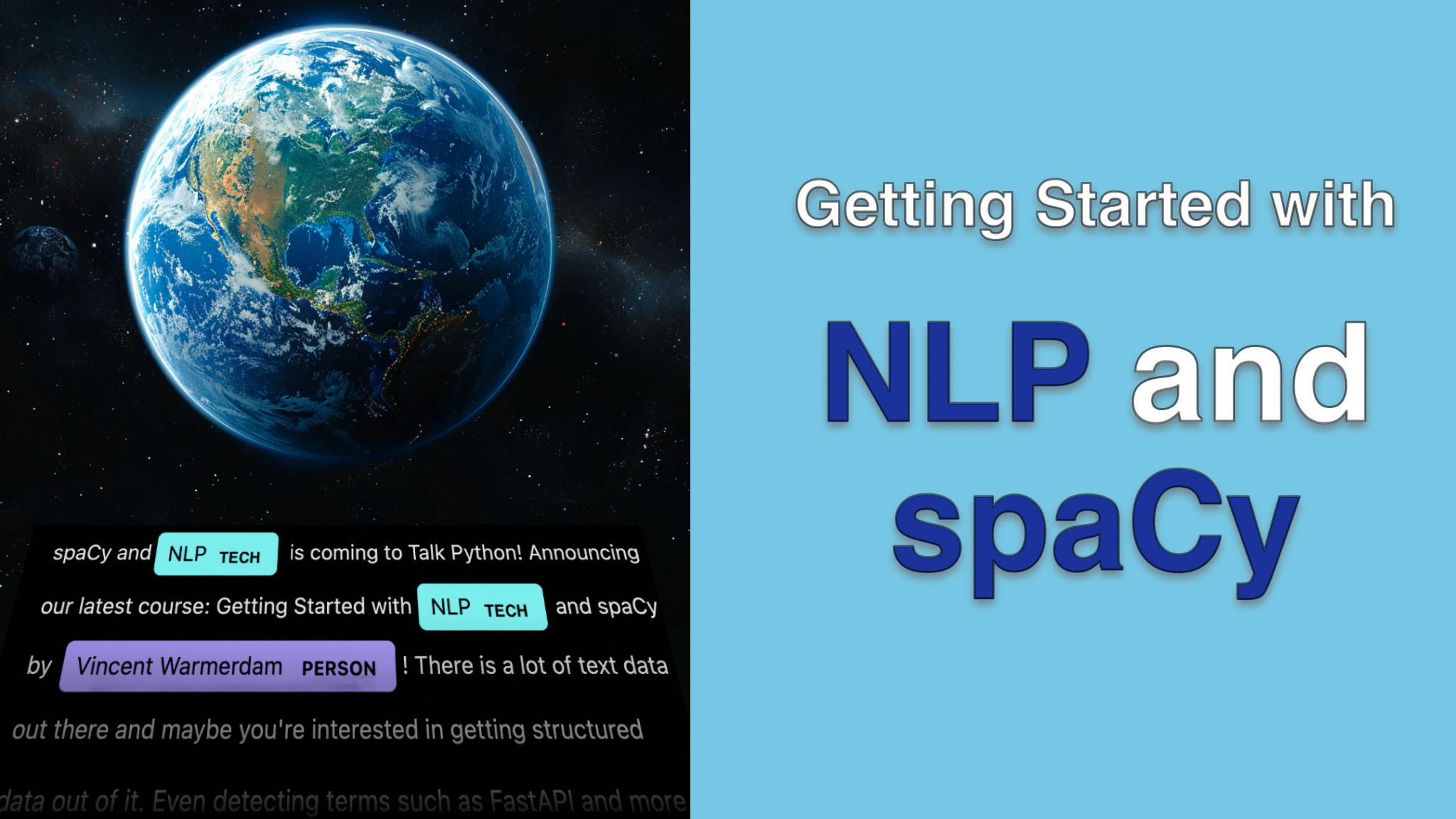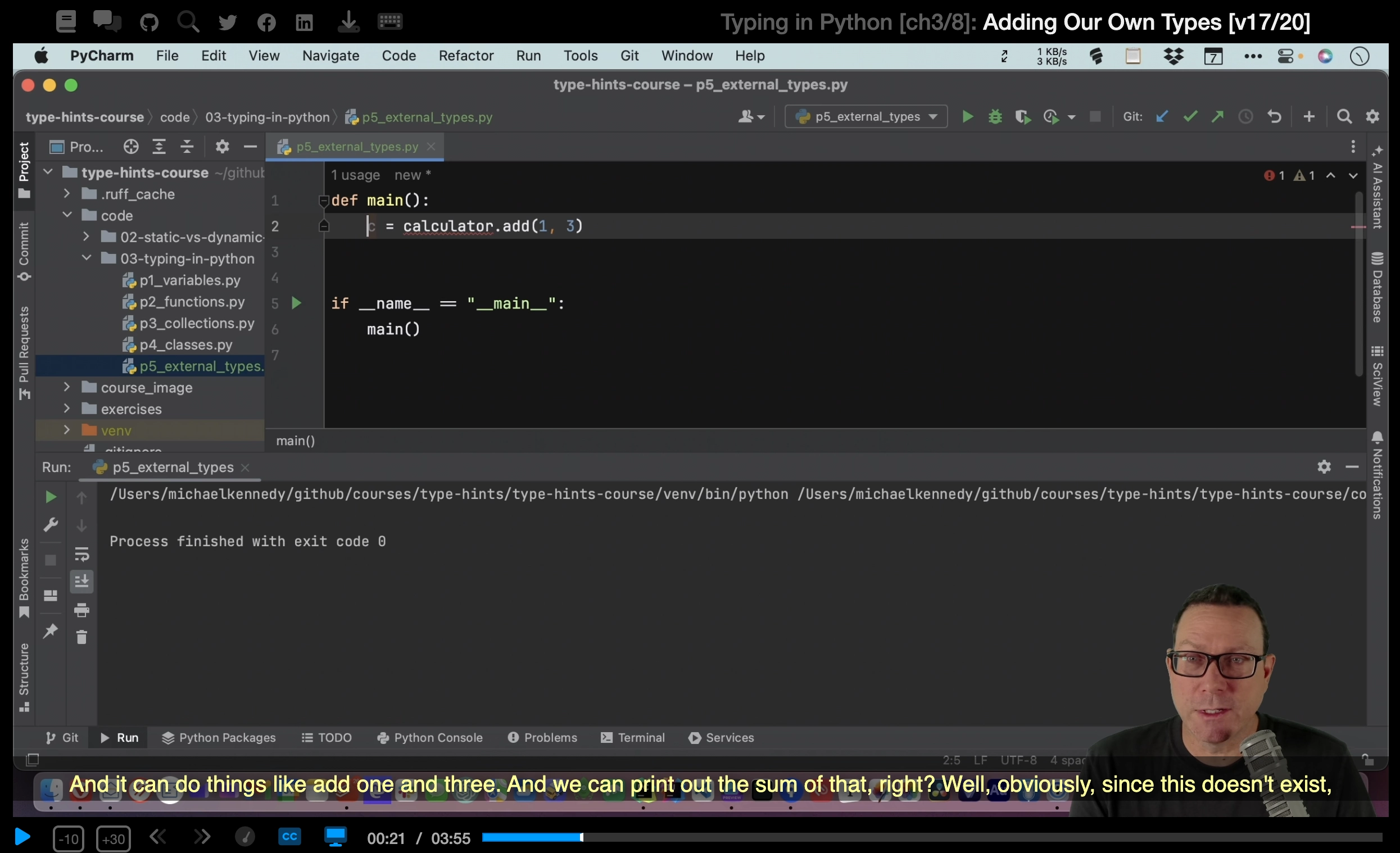Getting Started with NLP and spaCy in Jupyter Notebooks Course

Course Summary
As a motivation example, we'll have a look at the transcripts from the Talk Python podcast to see if we can automatically detect Python packages from it. We'll clean the data, explore it with spaCy, and training custom models. By the end of the course, you'll understand how to set up a proper NLP project and we'll also explore techniques beyond spaCy.
What students are saying
Source code and course GitHub repository
github.com/talkpython/nlp-with-python-and-spacy-courseWhat's this course about and how is it different?
This course explores NLP with a focus on spaCy. You will be able to follow along by downloading the code but the videos themselves offer plenty of whiteboarding moments that help motivate why the code is written the way that it is.
What topics are covered
In this course, you will:
- Learn the building blocks of spaCy including tokens, spans, documents and entities.
- See what the spaCy base models can detect on your behalf
- Understand why generators can really make it easier to handle text files
- Set up spaCy such that it can handle large datasets
- Understand how spaCy entities can be interpreted with flexibility
- Build spaCy pipelines with business rules
- Work with spaCy projects
- Train custom spaCy models on your own annotated data
- Understand the value of annotating your own data
- Learn how to prompt ChatGPT to tackle NLP tasks
- Configure LLMs for NLP via spaCy-LLM
- Leverage the Huggingface ecosystem via GliNER and SpanMarker
Who is this course for?
This course is for anyone who knows a bit of Python and wants to dip their toes into NLP. While the course does discuss machine learning it does not rely on any knowledge of maths. The course will focus on spaCy as a primary tool but it will also discuss how to setup projects for NLP in general. At the end the course, we will also discuss related tools like large language models, and discuss how these can be effectively used in NLP projects.
If you're curious about NLP or just feel like expanding your data skills in a new domain, then this course is for you!
We do assume that you know core Python syntax and concepts such as virtual environments and external packages. If you are entirely new to Python, see our Python for Beginners course.
Concepts backed by concise visuals
While exploring a topic interactively with demos and live code is very engaging, it can mean losing the forest for the trees. That's why when we hit a new topic, we stop and discuss it with concise and clear visuals.
Vincent uses a drawing tablet to explain what the code is doing by drawing over the code in real time. This allows him to add plenty of context and it will also help you understand which steps need to happen and why. Here's an animated graphic that shows what it might look like.

Get hands-on with almost every chapter
Learning a new language features and concepts is an interactive experience. That's why it's important to write play around with the code from this course yourself. The code for this course can be found on Github.
This course is delivered in very high resolution

This course is delivered in 1440p (4x the pixels as 720p). When you're watching the videos for this course, it will feel like you're sitting next to the instructor looking at their screen.
Every little detail, menu item, and icon is clear and crisp. Watch the introductory video at the top of this page to see an example.
Follow along with subtitles and transcripts
Each course comes with subtitles and full transcripts. The transcripts are available as a separate searchable page for each lecture. They also are available in course-wide search results to help you find just the right lecture.

Who am I? Why should you take my course?

The time to act is now
If this course is a good fit for you and your goals, you should jump right in. It goes deep but doesn't skip out too much the foundation background info. You'll start to see benefits for your code right away. And it comes with a 100% money back guarantee (see details), so it's 100% risk free as well.